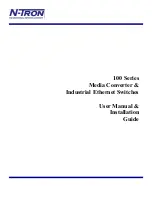
OSPF Configuration
257
[Switch B-ospf-1]
area 1
[Switch B-ospf-1-area-0.0.0.1]
network 197.1.1.0 0.0.0.255
[Switch B-ospf-1-area-0.0.0.1]
vlink-peer 3.3.3.3
3
Configure Switch C:
[Switch C]
interface Vlan-interface 1
[Switch C-Vlan-interface1]
ip address 152.1.1.1 255.255.255.0
[Switch C]
interface Vlan-interface 2
[Switch C-Vlan-interface2]
ip address 197.1.1.1 255.255.255.0
[Switch C]
router id 3.3.3.3
[Switch C]
ospf
[Switch C-ospf-1]
area 1
[Switch C-ospf-1-area-0.0.0.1]
network 197.1.1.0 0.0.0.255
[Switch C-ospf-1-area-0.0.0.1]
vlink-peer 2.2.2.2
[Switch C-ospf-1-area-0.0.0.1]
quit
[Switch C-ospf-1]
area 2
[Switch C-ospf-1-area-0.0.0.2]
network 152.1.1.0 0.0.0.255
Troubleshooting OSPF
OSPF has been configured in accordance with the above-mentioned steps, but OSPF
does not run normally on the router
Troubleshooting locally:
Check whether the protocol between two directly
connected routers is operating normally. The normal sign is the peer state machine
between the two routers reaching the FULL state.
On a broadcast or NBMA network, if the interfaces for two routers are in DROther
state, the peer state machine for the two routers are in 2-way state, instead of FULL
state. The peer state machine between DR/BDR and all the other routers is in FULL
state.
■
Execute the
display ospf peer
command to view neighbors.
■
Execute the
display ospf interface
command to view OSPF information in the
interface.
■
Use the
ping
command to check whether the physical link and the lower level
protocol are normal.
If the local router cannot ping the peer router, this indicates
that faults have occurred on the physical link and the lower level protocol.
■
If the physical link and the lower level protocol are normal, please check the OSPF
parameters configured on the interface. The parameters should be the same
parameters configured on the router adjacent to the interface. The same area ID
should be used, and the networks and the masks should also be consistent. (The
P2P or virtually linked segment can have different segments and masks.)
■
Ensure that the dead timer on the same interface is at least four times the value of
the hello timer.
■
If the network type is NBMA, the peer must be manually specified, using the
peer
ip-address
command.
■
If the network type is broadcast or NBMA, there must be at least one interface
with a priority greater than zero.
■
If an area is set as the STUB area to which the routers are connected, the area on
these routers must be also set as the STUB area.
■
The same interface type must be adopted for neighboring routers.
■
If more than two areas are configured, at least one area should be configured as
the backbone area with an ID of 0.
Содержание 5500 SI - Switch - Stackable
Страница 24: ...24 ABOUT THIS GUIDE...
Страница 30: ...30 CHAPTER 1 GETTING STARTED Figure 3 Setting up a New Connection Figure 4 Configuring the Port for Connection...
Страница 50: ...50 CHAPTER 1 GETTING STARTED...
Страница 54: ...54 CHAPTER 2 ADDRESS MANAGEMENT CONFIGURATION...
Страница 78: ...78 CHAPTER 3 PORT OPERATION...
Страница 88: ...88 CHAPTER 4 XRN CONFIGURATION...
Страница 122: ...122 CHAPTER 8 VLAN VPN CONFIGURATION...
Страница 216: ...216 CHAPTER 15 SSH TERMINAL SERVICES...
Страница 268: ...268 CHAPTER 16 IP ROUTING PROTOCOL OPERATION...
Страница 308: ...308 CHAPTER 17 NETWORK PROTOCOL OPERATION...
Страница 349: ...349...
Страница 350: ...350 CHAPTER 18 MULTICAST PROTOCOL...
Страница 522: ...522 CHAPTER 22 FILE SYSTEM MANAGEMENT...
Страница 584: ...584 CHAPTER 30 PASSWORD CONTROL CONFIGURATION OPERATIONS...
Страница 600: ...600 CHAPTER 31 MSDP CONFIGURATION...
Страница 614: ...614 CHAPTER 32 CLUSTERING...
Страница 670: ...670 CHAPTER C AUTHENTICATING THE SWITCH 5500 WITH CISCO SECURE ACS...
















































